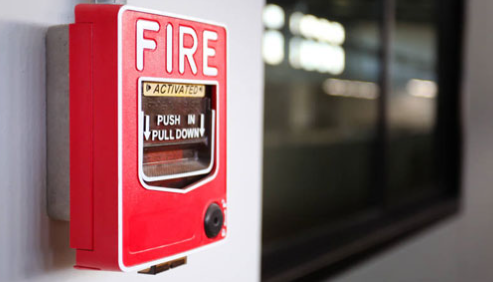In an era where safety is absolute, fire detection and alarm systems emerge as silent sentinels, standing vigilant against the ever-present threat of fire. This article delves deeper into the inner workings of these systems, unraveling the technology, components, and operational dynamics that make them indispensable guardians of lives and property.
I. Sensor Technologies: Eyes and Ears for Fire Detection
At the core of any fire detection and alarm system lie sophisticated sensors that serve as the system's eyes and ears. Smoke detectors, heat sensors, and flame detectors are among the key components. These sensors are calibrated to detect the earliest signs of a fire, triggering a rapid response that can mean the difference between containment and catastrophe.
II. Addressable vs. Conventional Systems: Tailoring Solutions to Needs
Fire detection systems come in two primary configurations: addressable and conventional. Addressable systems provide specific information about the location of an alarm, allowing for a more precise response. Conventional systems, on the other hand, divide a building into zones, indicating a general area where an alarm has been activated. The choice between these systems depends on the complexity and needs of the space being protected.
III. Control Panels: The Brain of the Operation
A fire detection and alarm system's control panel serves as the central hub, processing information from sensors and initiating appropriate responses. Modern control panels are equipped with intuitive interfaces, providing real-time information on the system's status. Some advanced panels can even be accessed remotely, enabling monitoring and control from a centralized location.
IV. Signaling Devices: Alarming for Safety
When a potential fire is detected, the system employs signaling devices to alert occupants and emergency responders. Audible alarms, strobe lights, and voice evacuation systems are common signaling devices. These components are strategically placed to ensure that alerts are heard and seen throughout the entire protected space, facilitating swift and organized evacuation.
V. Emergency Power Systems: Ensuring Continuity
In the event of a power outage, fire detection and alarm systems must remain operational to fulfill their life-saving functions. Emergency power systems, such as backup batteries and generators, ensure the continuous operation of the system, providing an added layer of reliability during critical moments.
VI. False Alarm Prevention: Fine-Tuning System Accuracy
False alarms can be disruptive and costly. To mitigate this risk, modern fire detection systems incorporate technologies and algorithms to reduce false positives. Intelligent analysis of sensor data, coupled with user-friendly interfaces for system management, contributes to a more accurate and reliable detection process.
VII. Evolving Standards and Regulations: Staying Ahead of the Curve
The field of fire detection and alarm systems is subject to evolving standards and regulations. Staying ahead of these requirements is essential for ensuring the system's compliance and effectiveness. Regular updates, training, and system upgrades are part of a comprehensive approach to maintaining a high level of safety.
Conclusion:
Fire detection and alarm systems, with their intricate components and advanced technologies, represent a formidable defense against the destructive force of fires. As technology continues to advance, these systems evolve, becoming even more sophisticated in their ability to detect and respond to potential threats. In the intricate dance of safety and security, fire detection and alarm systems stand as stalwart guardians, ready to spring into action at a moment's notice.
Frequently Asked Questions
Q1: What role do fire detection and alarm systems play in ensuring safety?
A1: Fire detection and alarm systems play a critical role in ensuring safety by continuously monitoring for signs of fire, providing early detection, and triggering alarms to alert occupants and emergency responders.
Q2: How do these systems contribute to the prevention of injuries and property damage in the event of a fire?
A2: The article discusses how fire detection and alarm systems contribute to the prevention of injuries and property damage by enabling swift evacuation and facilitating a prompt response from firefighting authorities, minimizing the impact of fires.
Q3: Are fire detection and alarm systems limited to specific environments, or are they applicable across various settings?
A3: The article addresses how fire detection and alarm systems are applicable across various settings, including residential, commercial, industrial, educational, and healthcare environments. Their versatility makes them essential in diverse spaces.
Q4: How have technological advancements improved the functionality of fire detection and alarm systems?
A4: The article explores how technological advancements, such as smart sensors, advanced communication systems, and data analytics, have enhanced the functionality of fire detection and alarm systems, making them more efficient and reliable.
Q5: What components make up the core of a fire detection and alarm system?**
A5: The article outlines the core components, including smoke detectors, heat sensors, alarms, control panels, and communication devices, and explains their respective roles in the overall functioning of a comprehensive fire detection and alarm system.
Q6: Is regular maintenance and testing crucial for the effectiveness of fire detection and alarm systems?**
A6: The article underscores the importance of regular maintenance and testing for fire detection and alarm systems. Routine checks and inspections are crucial to ensuring the proper functioning of these systems in emergencies.
Q7: Can fire detection and alarm systems be tailored to suit the unique needs of different environments?
A7: The article discusses how fire detection and alarm systems can be customized to meet the specific needs of different environments. This adaptability includes considerations for building size, occupancy, and industry-specific fire risks.
Q8: How do fire detection and alarm systems contribute to compliance with safety regulations and codes?
A8: The article explores how the installation and upkeep of fire detection and alarm systems contribute to compliance with safety regulations and building codes. Adhering to these standards is crucial for ensuring the safety of occupants and meeting legal requirements.


